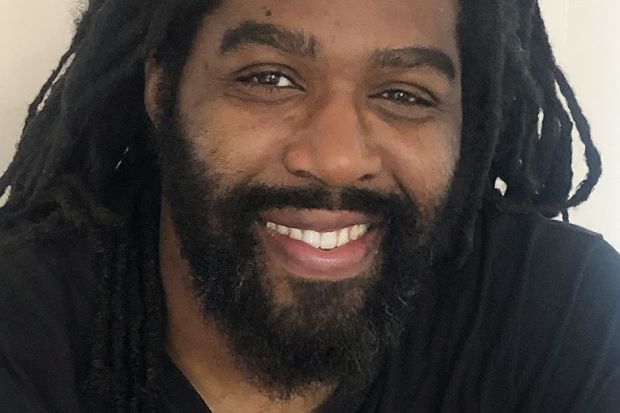Not long after the murder of George Floyd, the Herman Melville scholar James Gerard Noel was pulled over by campus police outside the California college where he had recently been appointed dean of English.
Standing at 6ft 7ins tall, with dreadlocks, the 40-year-old Briton assumed the officers might recognise him and the vehicle stop would be good-natured and collegiate, but the fear he experienced during that frosty encounter in late 2020 brought home the anxiety that black students feel on campus.
“Regardless of what I was doing, and at any moment, a traffic stop could result in the end of my life,” reflects Professor Noel in his new book, Safe Space Rhetoric and Race in the Academy: A Reckoning, which reflects on how the spectre of racism, police brutality and gun violence is ever-present in the minds of many American students and staff, but seems to be ignored when commentators mock calls for “safe spaces” on campus.
Those who like to deride the idea of “safetyism” in teaching – in which distressing or divisive subjects are avoided, or prefaced with trigger warnings – should instead consider the vulnerability felt by students on campus where armed police and mass shooting alarm points are a constant reminder of the violence that could erupt at any moment, Professor Noel suggests.
Having grown up in south London in the 1990s before winning a basketball scholarship to Master’s College near Los Angeles and playing professionally in the UK, Professor Noel said he could relate to the black students he teaches at Diablo Valley College, in San Francisco’s Bay Area. “Some of the violence that I experienced in the UK creates a bridge to my students,” he told Times Higher Education.
But the level of threat they felt, both on and off campus, is different. “Gun ownership is woven into the national fabric of America…so you have a greater threat to physical safety, and a sense that you could be targeted when you don’t expect it. Some of my students say they feel unsafe within the classroom walls,” said Professor Noel.
Even statues on university campuses have been a visible reminder of the violence perpetrated against minority groups, he added, stating that “institutions must go beyond surface-level changes to even come close to making students, faculty and staff feel safer”.
Professor Noel argued that those who decry safe spaces take a “reductive view of the trauma that students experience and bring with them into the classroom”. “This trauma is something that needs to be considered if students are going to feel welcome in class and faculty are going to engage properly with them,” he added.
While Professor Noel was labelled “the devil in dreads” by one student for the challenging classroom discussions he favoured, thinking about how discussions are framed or what texts are tackled is also important, he continued. “Students are resilient but maybe they don’t want to work through America’s racial politics in class,” he said.
Those who criticise “safetyism”, who are usually on the political right, are also those who are unlikely to instigate debates about their own closely held beliefs, such as the need for gun control laws to improve school safety, continues Professor Noel. “How can we even begin to talk about intellectual or emotional safety when physical safety and our very lives are at risk whenever we step onto campus?” Professor Noel asks in his book, adding that “sites we often consider to be safe spaces are frequent scenes for mass shootings”.
Instead, the safe space narrative is weaponised to shut down legitimate concerns from students about unacceptable behaviour, insists Professor Noel, who says that “too often, racism is pitted against free speech advocacy”, giving the example of an instructor posting a picture of themselves in blackface, which was defended in the name of free speech.
Those universities that trumpet their free speech credentials are often the ones whose silence on racial injustice is most noticeable, explains Professor Noel, who devotes a long section to the University of Chicago’s segregationist and discriminatory practices in the 1960s, which led to campus protests involving a young student radical called Bernie Sanders. The Chicago Principles championed by the Illinois university are now seen as the blueprint for free speech in higher education, and have been much discussed, but there has been little recognition of Chicago’s chequered history on race relations, said Professor Noel.
“I’ve always sought to create an environment where students feel comfortable expressing themselves freely, but if we’re going to have difficult conversations, then they also need to be about America’s history and the troubles it continues to face,” he said.
Recent efforts by Florida governor Ron DeSantis to ban discussions of critical race theory at public colleges suggest that supposed champions of academic freedom are only willing to invoke it when it suits them, he noted.
“If we are going to talk about coddling students from difficult ideas, then talk about efforts to block students from viewing history through the frame of black studies. That is what we should be talking about when it comes to academic freedom,” he said.
后记
Print headline: ‘Trauma of violence must be recognised’




